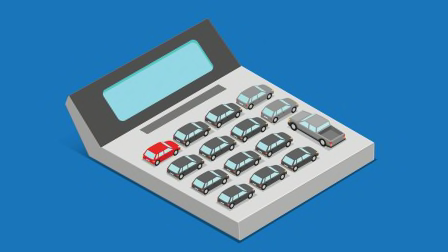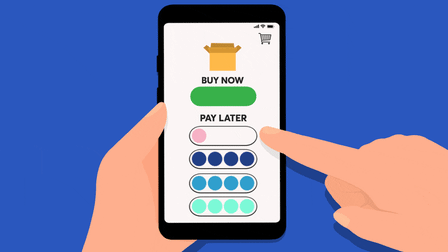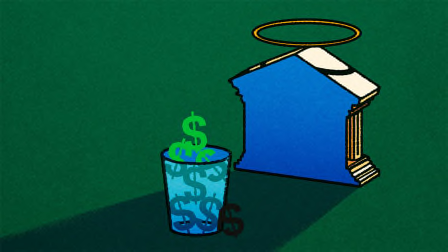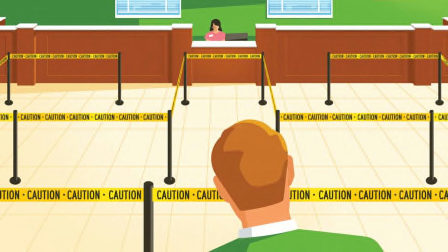New Buy Now, Pay Later Loans Come With More Risks
Companies like Affirm, Klarna, PayPal, and Sezzle that offer interest-free pay-in-four loans also provide longer-term loans that can have high interest rates, confusing consumers
Update: On May 22, 2024, the Consumer Financial Protection Bureau ruled that buy now, pay later companies must provide consumers the right to dispute charges and demand refunds after returning a product, similar to the protections they have when using a credit card. The rule is expected to go into effect this fall. “The CFPB’s new rule is an important step toward extending basic rights to BNPL users, but the bureau should take further action to fully protect consumers,” says Jennifer Chien, a senior policy council for financial fairness at Consumer Reports.
Buy now, pay later loans (BNPL) have exploded in popularity in recent years, in part because of their simplicity: Put 25 percent down on a purchase, then pay off the rest in three easy payments, with no interest or fees.
But some of the companies that make those loans—Affirm, Klarna, PayPal, and Sezzle—also offer other kinds of loans, with longer terms and interest rates, including some that are higher than if you paid for something using a credit card.
And it’s not always clear to people when they sign up which of these loans they’re getting.
For example, last year Consumer Reports held online discussions with people who had purchased products with BNPL loans and heard from a California woman who ran into a problem when buying a mattress. The loan was advertised as having 0 percent interest and no fees, she says. But after putting in all of her information and getting approved, she was surprised and frustrated to learn that the terms came back with a 4 percent interest rate.
Three Main Risks
Because they’re still relatively new, Chien says regulators haven’t yet looked closely at longer-term, interest-charging BNPL loans. But they should, given that 11 percent of consumers who got a buy now, pay later loan in 2021 had one that charged interest, according to a survey from the Financial Health Network conducted that year.
BNPL companies say these longer-term, big-dollar loans benefit consumers. For example, PayPal says its Pay Monthly loans, which can be used to make purchases up to $10,000, don’t require a down payment, which may be helpful for customers who lack the funds needed to initiate a purchase. The company also touts that it runs promotions of 4.99 percent interest rate loans from time to time.
Affirm says that its longer-term loans, up to $25,000, are a credit card alternative and that even though they can carry interest rates up to 36 percent, they’re calculated as “simple interest”—charged just once to a consumer—instead of charged monthly (compounded) as with some credit cards.
Klarna says its longer-term loans can help people purchase big-ticket items and that its interest rates top out at 29.99 percent. Sezzle declined to comment.
Still, for CR’s Chien, longer-term buy now, pay later loans may have some unexpected downsides that consumers should be aware of.
It’s an expensive way to borrow money. While it’s true that there can be low-cost promotional offers, in general, these loans can be very expensive and charge high fees for late payments, says Ed Mierzwinski, senior director for the federal consumer program at the U.S. Public Interest Research Group (PIRG). In addition to levying interest rates as high as 36.99 percent, “if you fail to make a single payment in a timely manner, you could get socked with late fees around $30 or more,” he says.
In fact, a long-term buy now, pay later loan could be even more expensive than charging the purchase on a traditional credit card, assuming you have one. For example, a $2,500 buy now, pay later loan paid in 24 months with an APR of 36.99 percent would cost $1,074 in interest vs. $672 at 24 percent, the average for credit cards, according to the online lending marketplace Lending Tree. Also, while many credit cards offer valuable reward points and come with important purchase protections, these monthly loans don’t. (See below for more on that.)
Your credit score could suffer in two ways. For one, the application process for some longer-term buy now, pay later loans could involve a hard check of your credit score. That can ding it by up to 5 points each time, says Chi Chi Wu, senior attorney at the National Consumer Law Center.
And it can take as long as 12 months before those lost points are restored, Wu says. While that may not be a big deal for most folks, for others it could make a costly difference. If you’re also applying for, say, a mortgage, the loss of a few points on your score could mean having a fair score instead of a good one, which in turn could translate into less favorable loan terms and higher rates.
The second problem: As with credit cards, buy now, pay later payments made 30 or more days late may be reported to the credit bureaus and negatively affect your credit score, Wu says.
In August 2022 CR conducted a nationally representative survey (PDF) of 2,013 U.S. adults who have used BNPLs. Of the people who missed a payment, over a third said it was because they simply lost track of the deadline. To prevent that, Chien recommends setting up automatic payments, and once you do, double-checking that the setup works. That’s because in the survey, of those who reported missing a payment, 16 percent said they thought they had set up auto-pay, but the payment wasn’t made automatically as they expected.
Purchases might not be protected as they would be with a credit card. When you make a purchase using a credit card and never receive the item or wind up returning it, you have what’s called “charge-back” rights, Mierzwinski says. That means you can call the credit card company and legally stop the payment from going through if it hasn’t already been credited.
This is not the case when you buy something using a short- or long-term buy now, pay later loan. If you need to return a product or never receive it, you have to contact the seller (and it’s a good idea to also contact the lender) before you can stop making payments and be refunded any money you may have already paid, a process that’s a hassle and can take several weeks, according to the Consumer Financial Protection Bureau.
Consider what happened when a consumer in Maryland purchased $5,600 of furniture with a buy now, pay later monthly loan. According to a CFPB complaint, the delivery of several items totaling $790 was delayed before the seller canceled the outstanding part of the order. But the consumer had already paid the buy now, pay later loan in full—and wanted a refund. The person couldn’t get the BNPL company to reopen the account and get the credit from the seller.
If you use a buy now, pay later loan, the risk that this could happen to you isn’t small. About 13 percent of all purchases in 2021 were returned, according to the CFPB. In CR’s survey, 4 percent of people who had used buy now, pay later loan said they had difficulty stopping payments after they returned an item, and 5 percent said they had difficulty getting a refund.
Charge-back rights are among the many buy now, pay later policy prescriptions that Chien thinks are necessary. “Consumers should also be granted charge-back rights with buy now, pay later loans of any length and certainly not be required to continue payments for any length of time on items they’ve already returned or never received,” she says.
What’s a Shopper to Do?
Paying for purchases in full, whenever possible, is ideal, Chien says. It keeps you from taking on debt and relieves you of having to track payments for your purchases. Paying in full can include putting the charge on a credit card, the balance of which you intend to pay off immediately.
But if you have to finance a purchase over time, “shop around and compare your options,” Chien says. “If you’re looking for a longer-term installment loan, your best bet could be your credit card, it could be a loan from a bank or credit union, or it could be a plan from the retailer,” especially when a promotional rate is being offered. “Whichever you choose, be sure to read the fine print so you know what you are getting and what fees or other charges might be involved,” Chien says.
Here is your best course of action for different types of purchases you might make.
Can’t afford a small purchase or don’t have a credit card? Consider a traditional pay-in-four loan if you are certain you can repay it in six weeks. But be sure to set up auto-pay so you won’t miss a payment. (In CR’s survey, nearly a third of buy now, pay later shoppers paid for their last BNPL purchase with manual payments, which can be risky.)
Can’t pay all at once for a large purchase? If possible, charge the item or service on your credit card and pay the balance off as quickly as possible. You might earn reward points and will have consumer purchase protections that buy now, pay later loans don’t offer, says Mierzwinski of U.S. PIRG.
Need to make a larger purchase but don’t have a credit card? Talk to your bank or credit union. Many offer small- or medium-sized personal loans with reasonable terms. Three-year loans at both types of lender currently average about 10 percent interest, according to the National Credit Union Administration. If you need to build up your credit file or want to improve your score, making timely payments will help you do that because these loans are typically reported to the credit bureaus. Another benefit: You can use the funds for multiple purchases or to pay down more costly debt.
Need another way to finance? You could still consider a monthly loan from a buy now, pay later company—ideally if you can snag a low promotional rate. But remember, these loans are least potentially problematic if you’re buying something that you’re certain will be delivered to you in a timely way and that you don’t expect to return. To keep the costs as low as possible, make on-time payments to avoid late fees.
Clarification: This article was updated to clarify how long Affirm has offered longer-term loans and the interest rates it charges for them.

















